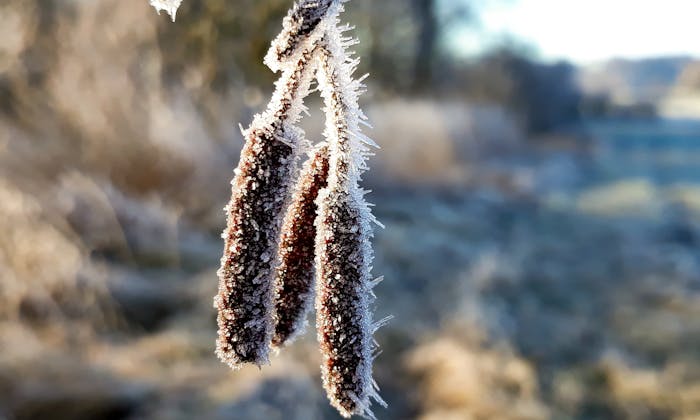Everything you need to know about frost dates, including find yours! What is your first frost date and last frost date?
Two pivotol questions in gardening are: when is your last frost date and when is your first frost date?
These are two tricky questions for most of us in Southern California. Unless you are in the mountains or the high desert, you don't get much frost at all! So how are you supposed to calculate your frost date?
I've looked up my frost date on many websites, and they give numbers that are all over the place! Depending on who you ask, my last frost date ranges from "You don't have a frost date" to "May 9th". Seriously, May 9th? If I waited until May 9th to plant my seeds, I'd be missing out on so much good growing time! When has it ever frosted in the San Gabriel Valley in May?
Frost Dates are Calculated by Statistics
Frost dates are calculated by taking average readings from historical record and figuring out the probability of frost on a given day.
This is problematic for two reasons:
- They don't do weather prediction. Weather varies dramatically from year to year, and for most of us in temperate Southern California, frost can mean the difference of only a few degress in temperature. Based on my thermometers, my coldest nights in 2021 were at the lowest, 29 degrees. If next year is a warmer year by just a few degrees, there will be not frost days.
- Climate Change: these charts don't usually take into account the warming trends we have been experiencing for many years now. They only take an average of the historical record, so while recent years are factored in, there is no interpolation to help predict the years going forward.
Last Frost isn't as Critical In SoCal
Another thing to keep in mind with frost dates is, they just aren't as critical for us as they are for people who live in cold places. Think about this, we are growing most of the same vegetables as they are: zucchini, carrots, tomatoes, broccoli, spinach, so many of them are the same everywhere.
Now, if you live in Missouri and you get your frost date wrong, you might be hit with a cold snap of 5 or 10 days. And that cold snap could be 10 degrees Fahrenheit. But for most of us in Southern California, a late freeze like that is probably a once in a century event.
Instead, a surprise, unexpected cold snap for us would look more like 30 degree weather for a couple of days. Your vegetables would probably survive that, especially if you took measures to mitigate the damage, such as mulching (which you are already doing), placing water bottles or covering them up with protective tarp.
Factors Related to Last Frost Date
From all of this we can already conclude that a "Last Frost Date" is another "rule of thumb" concept. We take action based on the "Last Frost Date", less because of cause and effect, but more because it just works.
In Southern California, picked a "Last Frost Date" that is early versus late will effect other factors that arguably have nothing to do with frost, but have a lot to do with how our plants will grow and whether they will thrive.
If we plant early, we can expect wetter soil. If you're planting into clay soil, this might mean the ground is soggy and wet for months. A condition that can either help or hurt your plants, depending on what you are growing.
Another factor is sunshine. When you plant early in the year, your plants will have less opportunity to receive sunlight than they would later in the year. In Los Angeles, daylight on the Winter Solstice is four and half hours shorter than it is on the Summer Solstice! Of course, the angle of the sun is different and any shadows cast on your growing space will change as well, so ymmv!
How Do We Use All of This?
The major use of a first and last frost date is knowing when to start planting, whether you are growing from seed or seedling. What you want to do is pick a date and use that, and that date is going to depend very much on factors like how far you are from the ocean, mountains and deserts.
Lucky for you, I've pulled together a lot of data on this, and I've built a tool to help you decide what to use for your frost date. You just have to tell it your zip code and how cautious you want to be.
Living in the LA, I believe I get the most useful frost date setting my caution level very low. If I lived in Big Bear I might set it a bit higher, since the stakes of being wrong are higher. I also make a point of having a succession of plants, so I might set a few out at 10%, most at around 30% and hold a few back for later in th season.
Once you have committed to a frost date, you can follow the instructions on your seed packets, or this website, or whatever reference tool you are using that bases planting recommendations around the frost date.

